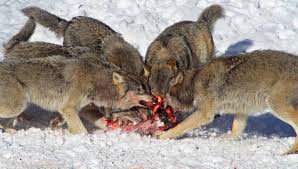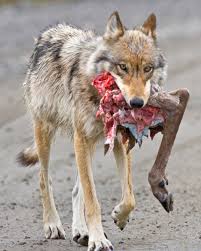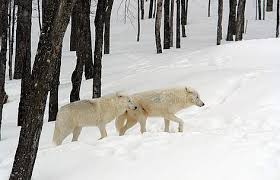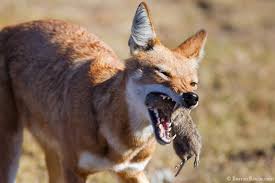
They are very opportunistic when it comes to what they eat. This can range from small rodents to medium and very large animals. Depending on the location this can include deer, beavers and bisons.
The peculiar thing is that they don't normally attack animals that are standing still. They will surround it for hours and days at a time and when it starts to run they chase it and try to take it down.

Red wolves are carnivores, though their diet can vary depending on what is available to eat. They mostly hunt smaller mammals like raccoons, rabbits, and rodents, along with white tailed deer. Within their territory red wolves will travel up to 20 miles in search of food.
 Due to their environment, arctic wolves are very limited to the food they can consume. Their
prey is significantly larger, so it is a group effort to take them down. When prey is killed, a large
carcass of prey can feed and last the whole pack for several days. They will take turns feeding and
protecting their kill from other animals in the area. Arctic wolves can also go weeks without food, but
they consume all they can whenever it is available because they don't know when they will eat next.
Due to their environment, arctic wolves are very limited to the food they can consume. Their
prey is significantly larger, so it is a group effort to take them down. When prey is killed, a large
carcass of prey can feed and last the whole pack for several days. They will take turns feeding and
protecting their kill from other animals in the area. Arctic wolves can also go weeks without food, but
they consume all they can whenever it is available because they don't know when they will eat next.

Rodents make up the largest part of their diet. They don't hunt together but they do live in packs which is why they stick to animals they should be able to capture on their own.
Grey Wolf Feeding Habits and Info